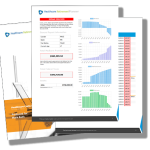Unleashing The Power Of SEO Testing In Today’s Digital Landscape
In the highly competitive digital world of today, search engine optimization (SEO) has taken center stage in enhancing Online visibility and driving organic traffic. Businesses and website owners find themselves amid a sea of websites, all vying for higher rankings on search engine result pages (SERPs). The need for an optimized SEO strategy has become more paramount than ever, and that’s where SEO testing steps in as a potent instrument, enabling you to harness the maximum potential of your website’s performance. Allow us to guide you through the intricate universe of SEO testing, underlining its importance, methodologies, and best practices that can revolutionize your online presence.
Decoding SEO Testing:
Think of SEO testing as a science project where you experiment with different optimization techniques to gauge their impact on organic search rankings, traffic, and user interaction metrics. It puts you in the driver’s seat, allowing for the refinement of various website elements such as content, keywords, metadata, site structure, and more. SEO testing sets the stage for controlled experimentation, leading to data-driven decisions that boost visibility, conversions, and user experience.
The Three Pillars Of SEO Testing
On-Page Testing:
On-page elements greatly influence search rankings. These elements include title tags, meta descriptions, headers, and the website content itself. Testing these elements can reveal effective optimization strategies regarding keyword placement, length, and formatting. Beyond this, on-page testing could involve experiments with internal linking and URL structures which play a critical role in improved crawling and indexing.
Technical Testing:
Technical SEO testing focuses on the backend elements and website infrastructure that influence search engine crawling and indexing. This involves assessing site speed, mobile-friendliness, XML sitemaps, robots.txt, canonicalization, and providing structured data markup. By pinpointing and rectifying technical issues, you guarantee smooth access and understanding of your site by search engines, consequently leading to elevated rankings.
Off-Page Testing:
Off-page SEO tests deal with external factors that influence search ranking, such as backlinks and social signals. Such tests might involve assessing varying link-building strategies, gauging the effect of social media engagement, and measuring online mentions’ and citations’ influence. Understanding the relationship between off-page elements and search performance allows you to finetune your off-site optimization endeavors.
Best Practices For Effective SEO Testing
A clearly defined agenda, along with a smartly formed hypothesis and robust analytical tools, can make a world of difference in your SEO testing journey. Adding to these, the use of A/B testing and iterative approach can set you on the path of continuous improvement.
Formulate Concrete Goals:
Define the specific goals and metrics you wish to enhance through SEO testing. Whether you aim to increase organic traffic, improve conversion rates or boost engagement metrics, well-defined objectives can streamline your testing efforts.
Develop a Hypothesis:
Generate a hypothesis based on your observations and insights before kickstarting any SEO test. This ensures a structured approach to your experimentations, enabling you to accurately measure your strategies’ effectiveness.
Execute A/B Testing:
A/B testing involves splitting the traffic between two versions of a webpage and comparing their performance. This technique allows you to determine the most effective titles, content, or calls-to-action.
Monitor and Analyze:
Implement robust analytics tools such as Google Analytics or third-party SEO platforms to track and assess your tests. Analyzing the data collected can help identify trends and make informed decisions to enhance your website’s performance.
Embrace an Iterative Approach:
SEO testing is unending. Continually refining and optimizing your strategies based on the insights from previous tests is key. By following this cyclical approach, you ensure constant improvement and adaptation to the ever-changing search engine algorithms.
In conclusion, SEO testing serves as an invaluable tool, enabling you to amplify your website’s organic performance. Through systematic experimentation and result analysis, you can optimize your website for superior search rankings, growing organic traffic, and enhanced user engagement. Remember to set clear goals, develop hypotheses, conduct A/B testing and monitor the results consistently. By embracing an iterative approach, you can keep a step ahead of the competition, driving sustainable growth through effective SEO optimization.
